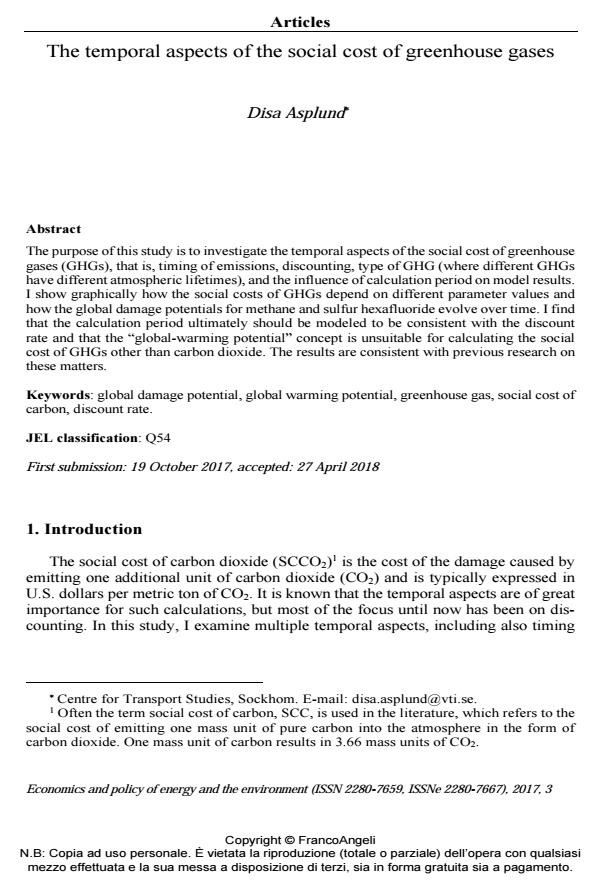The temporal aspects of the social cost of greenhouse gases
Journal title ECONOMICS AND POLICY OF ENERGY AND THE ENVIRONMENT
Author/s Disa Asplund
Publishing Year 2018 Issue 2017/3
Language English Pages 15 P. 25-39 File size 317 KB
DOI 10.3280/EFE2017-003002
DOI is like a bar code for intellectual property: to have more infomation
click here
Below, you can see the article first page
If you want to buy this article in PDF format, you can do it, following the instructions to buy download credits

FrancoAngeli is member of Publishers International Linking Association, Inc (PILA), a not-for-profit association which run the CrossRef service enabling links to and from online scholarly content.
The purpose of this study is to investigate the temporal aspects of the social cost of greenhouse gases (GHGs), that is, timing of emissions, discounting, type of GHG (where different GHGs have different atmospheric lifetimes), and the influence of calculation period on model results. I show graphically how the social costs of GHGs depend on different parameter values and how the global damage potentials for methane and sulfur hexafluoride evolve over time. I find that the calculation period ultimately should be modeled to be consistent with the discount rate and that the "global-warming potential" concept is unsuitable for calculating the social cost of GHGs other than carbon dioxide. The results are consistent with previous research on these matters.
Keywords: Global damage potential, global warming potential, greenhouse gas, social cost of carbon, discount rate.
Jel codes: Q54
- 온실가스 감축을 위한 국제사회의 탄소가격제 도입과 경제영향 분석 (Global Application and Economic Analysis of Carbon Pricing for Emissions Reduction) Jin-Young Moon, Minsoo Han, Jihei Song, Eunmi Kim, in SSRN Electronic Journal /2017
DOI: 10.2139/ssrn.3299911
Disa Asplund, The temporal aspects of the social cost of greenhouse gases in "ECONOMICS AND POLICY OF ENERGY AND THE ENVIRONMENT" 3/2017, pp 25-39, DOI: 10.3280/EFE2017-003002